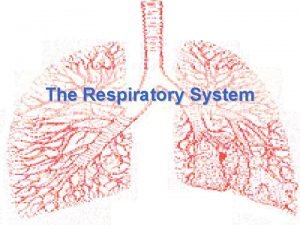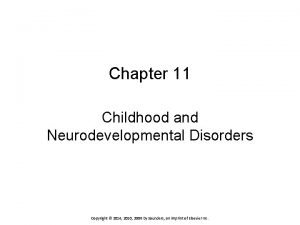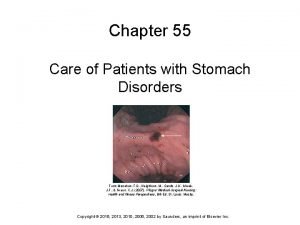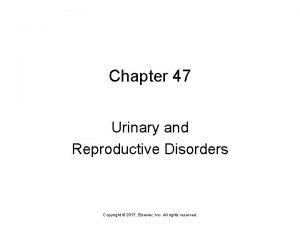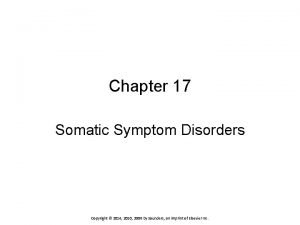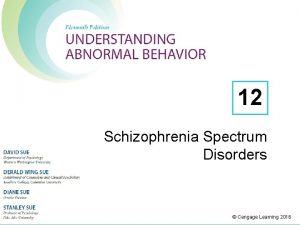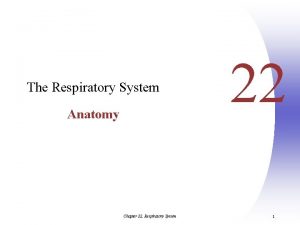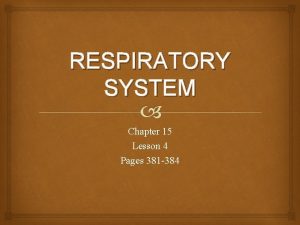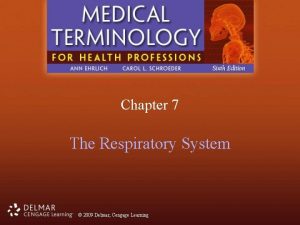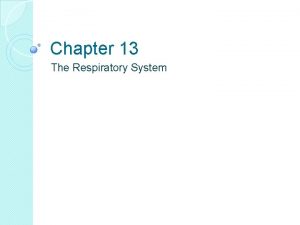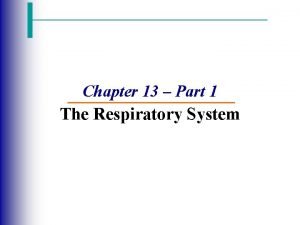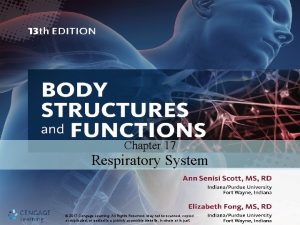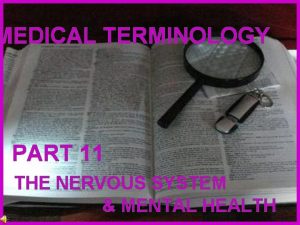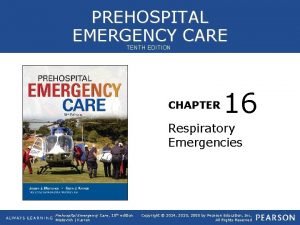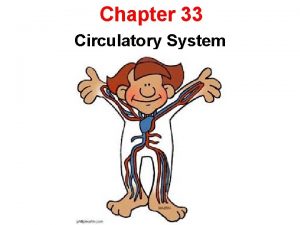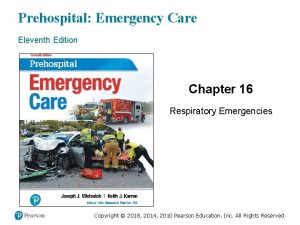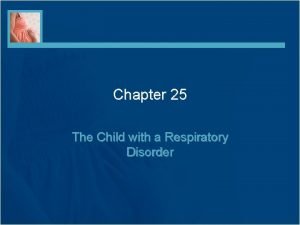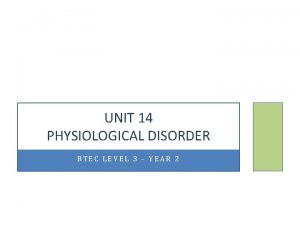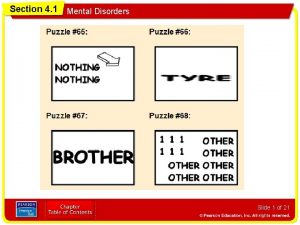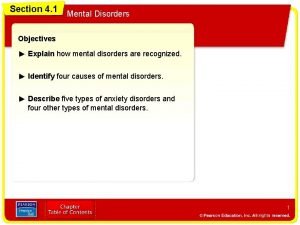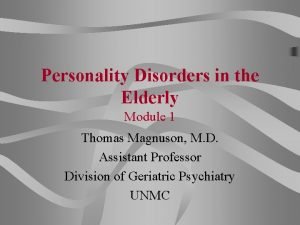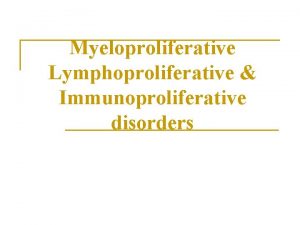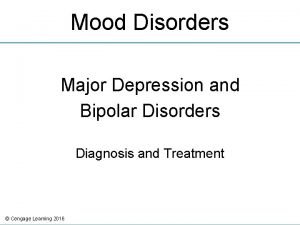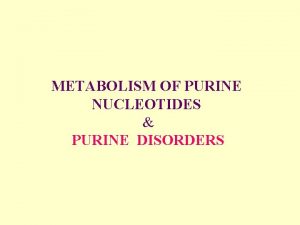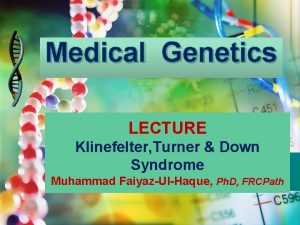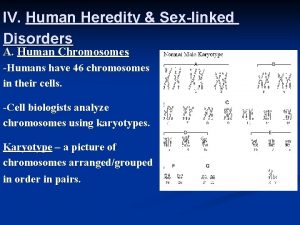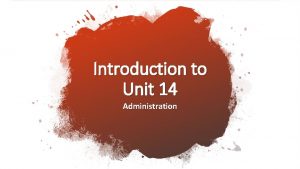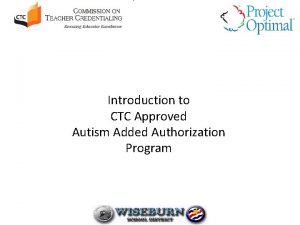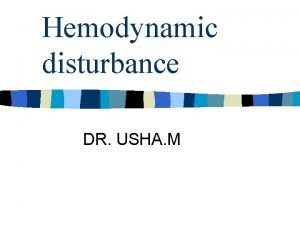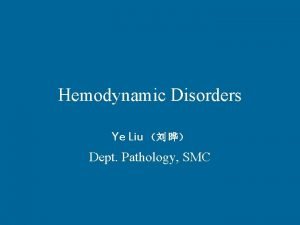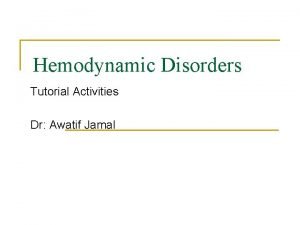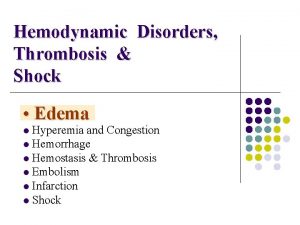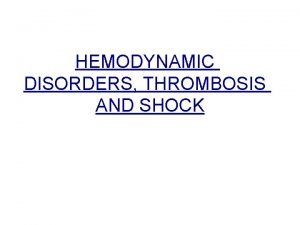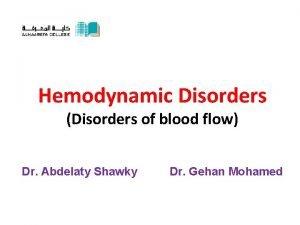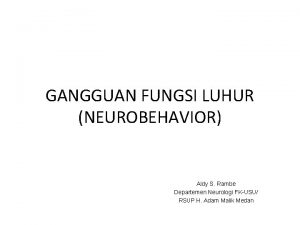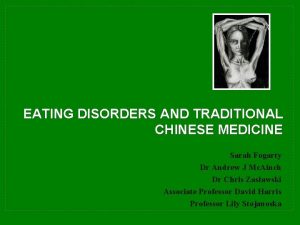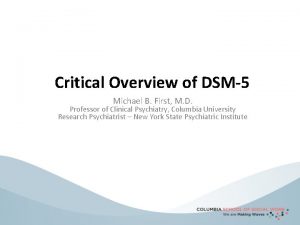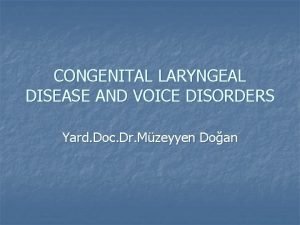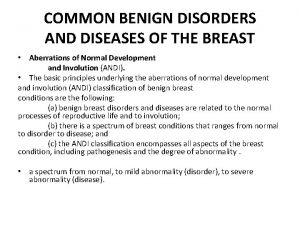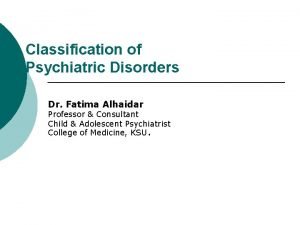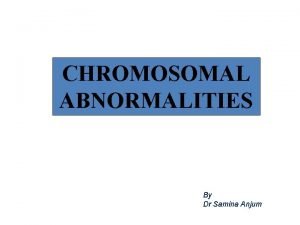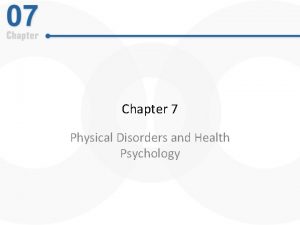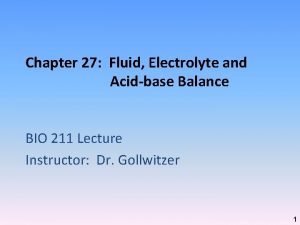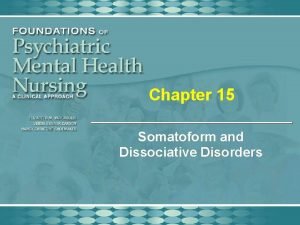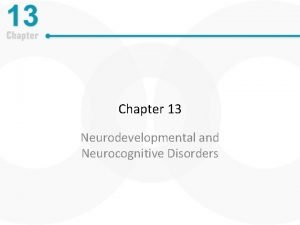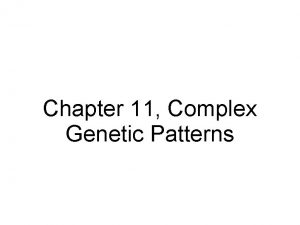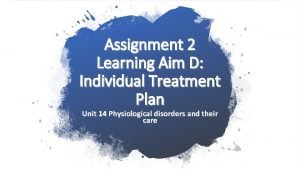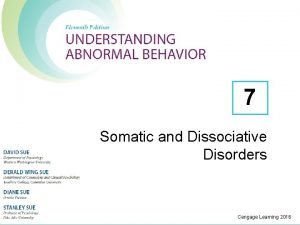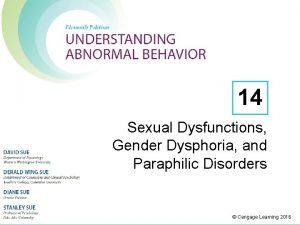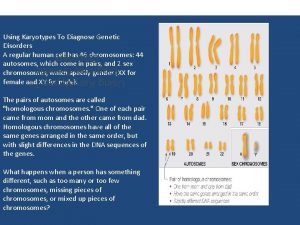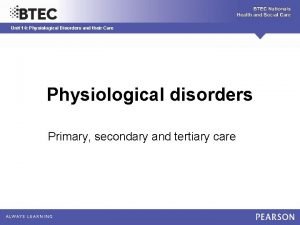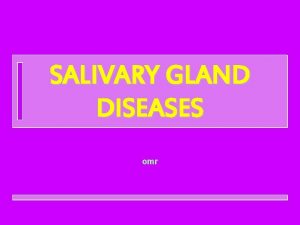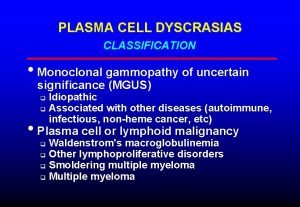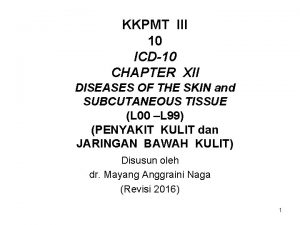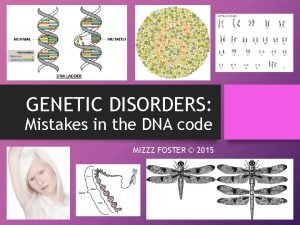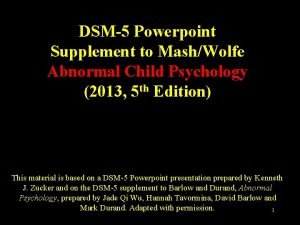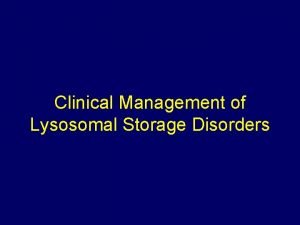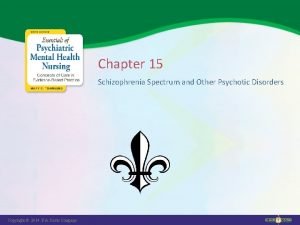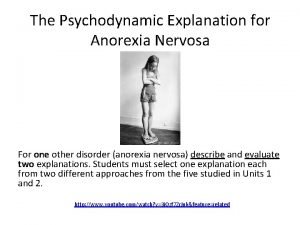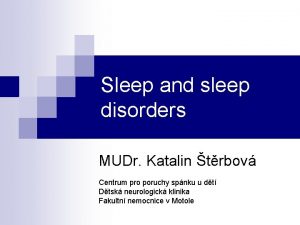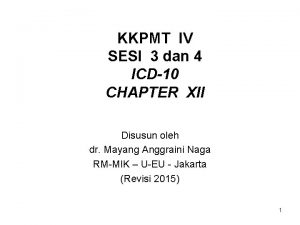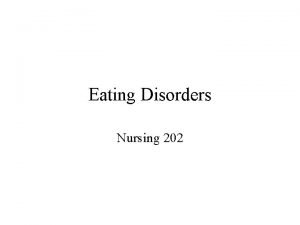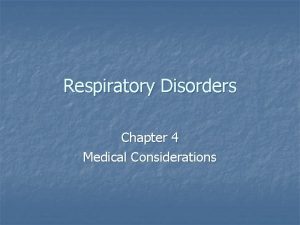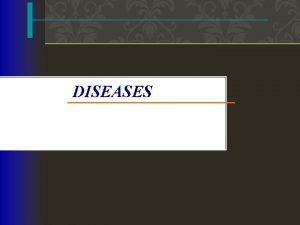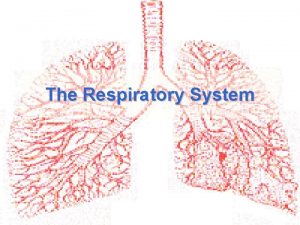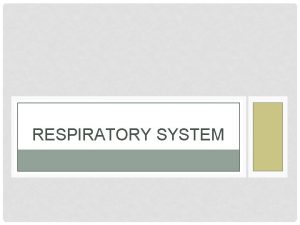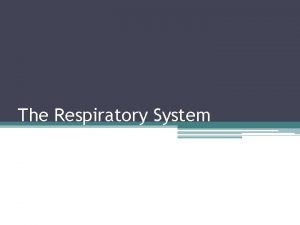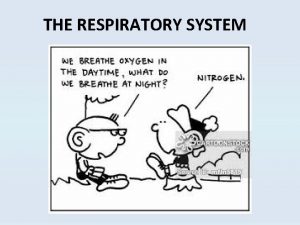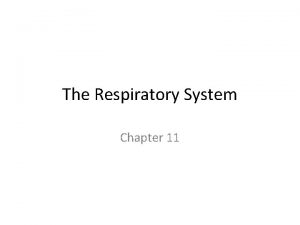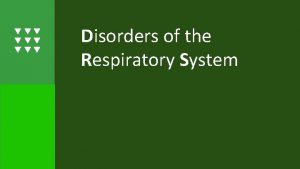Chapter 13 Respiratory System Disorders Respiratory System Purpose


















































































































































- Slides: 146

Chapter 13 Respiratory System Disorders

Respiratory System: Purpose and General Function Transport of oxygen from air to blood Ø Removal of carbon dioxide from the blood Ø Oxygen is necessary for cellular metabolism. Carbon dioxide is a waste product from metabolism. Two anatomical areas Upper respiratory tract • Resident flora Ø Lower respiratory tract • Sterile Ø • Copyright © 2014, 2011, 2006 by Saunders, an imprint of Elsevier, Inc. 2

Upper Respiratory Tract Nasal cavity Ø Ø Nasopharynx Ø Warming and moistening of air Foreign material trapped by mucous secretions Pharyngeal tonsils in posterior wall Palatine tonsils Ø Lymphoid tissue in posterior portion of the oral cavity • Copyright © 2014, 2011, 2006 by Saunders, an imprint of Elsevier, Inc. 3

Anatomy of the Respiratory System • Copyright © 2014, 2011, 2006 by Saunders, an imprint of Elsevier, Inc. 4

Upper Respiratory Tract (Cont. ) Oropharynx Ø Ø Larynx Ø Common passage for air and food Epiglottis protects opening into larynx. • Closes over glottis at swallowing to prevent aspiration Two pairs of vocal cords Trachea Ø Ø Lined by pseudostratified ciliated epithelium C-shaped rings of cartilage • Copyright © 2014, 2011, 2006 by Saunders, an imprint of Elsevier, Inc. 5

Lower Respiratory Tract Bronchial tree (continuous branching) Ø Trachea branches into: • Right and left primary bronchi • Secondary bronchi • Bronchioles • Terminal bronchioles • Respiratory bronchioles • Alveolar ducts • Alveoli—lined by simple squamous epithelium and surfactant to reduce surface tension and maintain inflation End point for inspired air Site of gas exchange • Copyright © 2014, 2011, 2006 by Saunders, an imprint of Elsevier, Inc. 6

Ventilation Process of inspiration and expiration Ø Airflow depends on pressure gradient (Boyle’s law). • Air always moves from high-pressure area to lowpressure area Atmospheric pressure higher than pressure in alveoli • Inspiration—air moves from atmosphere into lungs Ø Pressure in alveoli higher than in atmosphere • Expiration—air moves from lungs into atmosphere Ø • Copyright © 2014, 2011, 2006 by Saunders, an imprint of Elsevier, Inc. 7

Ventilation • Copyright © 2014, 2011, 2006 by Saunders, an imprint of Elsevier, Inc. 8

Pulmonary Volumes Tidal volume is the amount of air exchanged with quiet inspiration and expiration. Residual volume Ø Volume of air remaining in lungs after maximum respiration Vital capacity Ø Maximal amount of air that can be moved in and out of the lungs with a single forced inspiration and expiration • Copyright © 2014, 2011, 2006 by Saunders, an imprint of Elsevier, Inc. 9

Pulmonary Volumes (Cont. ) • Copyright © 2014, 2011, 2006 by Saunders, an imprint of Elsevier, Inc. 10

Control of Ventilation Primary control centers for breathing Ø Located in the medulla and pons Chemoreceptors detect changes in carbon dioxide level, hydrogen ion, and oxygen levels in blood or cerebrospinal fluid (CSF) Central chemoreceptors • Located in the medulla Ø Peripheral chemoreceptors • Located in the carotid bodies Ø • Copyright © 2014, 2011, 2006 by Saunders, an imprint of Elsevier, Inc. 11

Respiratory Control • Copyright © 2014, 2011, 2006 by Saunders, an imprint of Elsevier, Inc. 12

Control of Ventilation (Cont. ) Hypercapnia Ø Ø Carbon dioxide levels in the blood increase. Carbon dioxide easily diffuses into CSF. • Lowers p. H and stimulates respiratory center • Increased rate and depth of respirations (hyperventilation) • Causes respiratory acidosis—nervous system depression Hypoxemia Ø Marked decrease in oxygen • Chemoreceptors respond. • Important control mechanism in individuals with chronic lung disease—move to hypoxic drive • Copyright © 2014, 2011, 2006 by Saunders, an imprint of Elsevier, Inc. 13

Hypoxic Drive • Copyright © 2014, 2011, 2006 by Saunders, an imprint of Elsevier, Inc. 14

Control of Ventilation (Cont. ) Hypocapnia Ø Caused by low carbon dioxide concentration (low partial pressure of carbon dioxide) in blood • May be caused by hyperventilation Excessive amounts of carbon dioxide expired • Causes respiratory alkalosis • Copyright © 2014, 2011, 2006 by Saunders, an imprint of Elsevier, Inc. 15

Gas Exchange Flow of gases between the alveolar air and blood (external respiration) Gas exchange depends on the relative concentrations (partial pressures) of the gases. Ø Ø PO 2—partial pressure of oxygen PCO 2—partial pressure of carbon dioxide Each gas in a mixture moves along its partial pressure gradient, independent of other gases (Dalton’s law). • Copyright © 2014, 2011, 2006 by Saunders, an imprint of Elsevier, Inc. 16

Pulmonary Capillaries Around Alveolus • Copyright © 2014, 2011, 2006 by Saunders, an imprint of Elsevier, Inc. 17

Cross Section of Alveolus • Copyright © 2014, 2011, 2006 by Saunders, an imprint of Elsevier, Inc. 18

Diffusion of Gases • Copyright © 2014, 2011, 2006 by Saunders, an imprint of Elsevier, Inc. 19

Factors Affecting Diffusion of Gases Partial pressure gradient Thickness of the respiratory membrane Ø Total surface area available for diffusion Ø Fluid accumulation in alveoli or interstitial tissue impairs gas exchange. If part of alveolar wall is destroyed, surface area is reduced, so less exchange Ventilation-perfusion ratio Ø Ventilation (air flow) and perfusion (blood flow) need to match for maximum gas exchange. • Copyright © 2014, 2011, 2006 by Saunders, an imprint of Elsevier, Inc. 20

Transport of Oxygen and Carbon Dioxide Oxygen Ø Ø Ø About 1% of oxygen is dissolved in plasma. Most is bound (reversibly) to hemoglobin. Binding and release of oxygen to hemoglobin depend on: • PO 2, PCO 2, temperature, plasma p. H Carbon dioxide Ø Ø Waste product from cellular metabolism About 7% dissolved in plasma About 20% reversibly bound to hemoglobin Most diffuses into red blood cells • Copyright © 2014, 2011, 2006 by Saunders, an imprint of Elsevier, Inc. 21

Oxyhemoglobin Dissociation curve • Copyright © 2014, 2011, 2006 by Saunders, an imprint of Elsevier, Inc. 22

Diagnostic Tests Spirometry—pulmonary function test (PFT) Ø Arterial blood gas determination Ø Checks oxygen, carbon dioxide, bicarbonate, serum p. H Oximetry Ø Test pulmonary volumes and airflow times Measures O 2 saturation Exercise tolerance testing Ø For patients with chronic pulmonary disease • Copyright © 2014, 2011, 2006 by Saunders, an imprint of Elsevier, Inc. 23

Diagnostic Tests (Cont. ) Radiography Ø Ø Bronchoscopy Ø Ø Helpful in evaluating tumors Evaluate infections Perform biopsy. Check site of lesion or bleeding. Culture and sensitivity tests Ø Ø Sputum testing for presence of pathogens Determine antimicrobial sensitivity of pathogen • Copyright © 2014, 2011, 2006 by Saunders, an imprint of Elsevier, Inc. 24

General Manifestations of Respiratory Disease Sneezing Ø Reflex response to irritation in upper respiratory tract • Assists in removing irritant • Associated with inflammation or foreign material Coughing Irritation caused by nasal discharge Inflammation or foreign material in lower respiratory tract Ø Caused by inhaled irritants Ø Ø • Copyright © 2014, 2011, 2006 by Saunders, an imprint of Elsevier, Inc. 25

General Manifestations of Respiratory Disease (Cont. ) Sputum Yellowish-green, cloudy, thick mucus • Often indication of a bacterial infection Ø Rusty or dark-colored sputum • Usually sign of pneumococcal pneumonia Ø Very large amounts of purulent sputum with foul odor • May be associated with bronchiectasis Ø Thick, tenacious mucus • Asthma or cystic fibrosis, blood-tinged sputum—may Ø result from chronic cough; may also be sign of tumor or tuberculosis • Copyright © 2014, 2011, 2006 by Saunders, an imprint of Elsevier, Inc. 26

General Manifestations of Respiratory Disease (Cont. ) Sputum (Cont. ) Ø Hemoptysis • Blood-tinged (bright red) frothy sputum, usually associated with pulmonary edema Breathing patterns and characteristics Eupnea • Normal rate Ø Kussmaul respirations • Deep rapid respirations—typical for acidosis; may follow Ø strenuous exercise • Copyright © 2014, 2011, 2006 by Saunders, an imprint of Elsevier, Inc. 27

General Manifestations of Respiratory Disease (Cont. ) Breathing patterns and characteristics (Cont. ) Labored respiration or prolonged inspiration or expiration • Often associated with obstruction of airways Ø Wheezing or whistling sounds • Indicate obstruction in small airways Ø Stridor • High-pitched crowing noise • Usually indicates upper airway obstruction Ø • Copyright © 2014, 2011, 2006 by Saunders, an imprint of Elsevier, Inc. 28

Respiratory Patterns • Copyright © 2014, 2011, 2006 by Saunders, an imprint of Elsevier, Inc. 29

General Manifestations of Respiratory Disease (Cont. ) Breath sounds Rales • Light bubbly or crackling sounds, with serous secretions Ø Rhonchi • Deeper or harsher sounds from thicker mucus Ø Absence • Nonaeration or collapse of lungs Ø • Copyright © 2014, 2011, 2006 by Saunders, an imprint of Elsevier, Inc. 30

General Manifestations of Respiratory Disease (Cont. ) Dyspnea Ø Severe dyspnea indicative of respiratory distress Ø Ø Ø Subjective feeling of discomfort • May be caused by increased carbon dioxide or hypoxemia • Often noted on exertion, such as climbing stairs Flaring of nostrils Use of accessory respiratory muscles Retraction of muscles between or above ribs Orthopnea Ø Ø Occurs when lying down Usually caused by pulmonary congestion • Copyright © 2014, 2011, 2006 by Saunders, an imprint of Elsevier, Inc. 31

General Manifestations of Respiratory Disease (Cont. ) Dyspnea (Cont. ) Ø Paroxysmal nocturnal dyspnea • Sudden acute type of dyspnea • Common in patients with left-sided congestive heart failure Cyanosis Ø Bluish coloring of skin and mucous membranes • Caused by large amounts of unoxygenated hemoglobin in blood Pleural pain Ø Results from inflammation or infection of parietal pleura • Copyright © 2014, 2011, 2006 by Saunders, an imprint of Elsevier, Inc. 32

General Manifestations of Respiratory Disease (Cont. ) Friction rub Ø Clubbed digits Ø Soft sound produced as rough, inflamed, or scarred pleural move against each other Result from chronic hypoxia associated with respiratory or cardiovascular diseases • Painless, firm, fibrotic enlargement at the end of the digit Changes in arterial blood gases Ø Ø Hypoxemia—inadequate oxygen in blood Hypercapnea—increased carbon dioxide in blood • Copyright © 2014, 2011, 2006 by Saunders, an imprint of Elsevier, Inc. 33

Basic Therapies for Respiratory Disorders • Copyright © 2014, 2011, 2006 by Saunders, an imprint of Elsevier, Inc. 34

Infectious Diseases • Copyright © 2014, 2011, 2006 by Saunders, an imprint of Elsevier, Inc. 35

Upper Respiratory Tract Infections Common cold (infectious rhinitis) Viral infection More than 200 possible causative agents Spread through respiratory droplets Hand-washing and respiratory hygiene important in prevention Ø Symptomatic treatment Ø Secondary bacterial infections may occur. • Usually caused by streptococci • Purulent exudate; systemic signs, such as fever Ø Ø • Copyright © 2014, 2011, 2006 by Saunders, an imprint of Elsevier, Inc. 36

Complications of Viral Respiratory Infection • Copyright © 2014, 2011, 2006 by Saunders, an imprint of Elsevier, Inc. 37

Upper Respiratory Tract Infections (Cont. ) Sinusitis Ø Ø Ø Usually bacterial infection Analgesics for headache and pain Course of antibiotics often required to eradicate infection Laryngotracheobronchitis (croup) Common viral infection, particularly in children Common causative organism • Parainfluenza viruses and adenoviruses Ø Infection usually self-limited Ø Ø • Copyright © 2014, 2011, 2006 by Saunders, an imprint of Elsevier, Inc. 38

General Comparison of Respiratory Infections in Children • Copyright © 2014, 2011, 2006 by Saunders, an imprint of Elsevier, Inc. 39

Upper Respiratory Tract Infections: Epiglottitis Acute infection Ø Common in children ages 3 to 7 years Usually caused by Haemophilus influenzae type B Rapid onset; fever and sore throat Child sits in tripod position Drooling and difficulty swallowing Heightened anxiety • Copyright © 2014, 2011, 2006 by Saunders, an imprint of Elsevier, Inc. 40

Upper Respiratory Tract Infections: Epiglottitis (Cont. ) Swelling of the larynx, supraglottic area, and epiglottis Ø Ø May obstruct airway Spasm of larynx common if area is touched with instruments Treatment Ø Oxygen and antimicrobial therapy • Copyright © 2014, 2011, 2006 by Saunders, an imprint of Elsevier, Inc. 41

Upper Respiratory Tract Infections: Influenza (Flu) Viral infection Three groups of influenza viruses Ø Ø Type A (most prevalent), types B and C Viruses constantly mutate. Sudden, acute onset with fever, marked fatigue, aching pain in the body May also cause viral pneumonia Mild case of influenza may be complicated by secondary bacterial pneumonia. Ø Commonly, deaths in flu epidemics result from pneumonia. Ø Ø • Copyright © 2014, 2011, 2006 by Saunders, an imprint of Elsevier, Inc. 42

Upper Respiratory Tract Infections: Influenza (Flu) (Cont. ) Treatment Symptomatic and supportive • Unless bacterial infection develops secondarily Ø Antiviral drugs • May reduce symptoms and duration • Reduces risk to infect others Ø Prevention Ø Ø Respiratory hygiene! Vaccination is recommended for most individuals. • Copyright © 2014, 2011, 2006 by Saunders, an imprint of Elsevier, Inc. 43

Type A H 1 N 1 Influenza This virus contains genes from pig, bird, and human flu strains. Usually affects children and teens younger than 20 years Healthy young adults also at high risk High mortality rate caused by acute respiratory syndrome Ø Ø Ø Pulmonary edema Pneumonia Requires ICU care • Copyright © 2014, 2011, 2006 by Saunders, an imprint of Elsevier, Inc. 44

Scarlet Fever Caused by group A β-hemolytic Streptococcus (S. pyogenes) Symptoms Ø Ø Ø Typical “strawberry” tongue Fever, sore throat Chills, vomiting, abdominal pain, malaise Treatment Ø Antibiotics • Copyright © 2014, 2011, 2006 by Saunders, an imprint of Elsevier, Inc. 45

Scarlet Fever (Cont. ) • Copyright © 2014, 2011, 2006 by Saunders, an imprint of Elsevier, Inc. 46

Lower Respiratory Tract Infections: Bronchiolitis Caused by the respiratory syncytial virus (RSV) Transmitted by oral droplet Virus causes necrosis, inflammation in small bronchi and bronchioles Signs Ø Wheezing and dyspnea, rapid shallow respirations, cough, rales, chest retractions, fever, malaise Treatment Ø Supportive and symptomatic • Copyright © 2014, 2011, 2006 by Saunders, an imprint of Elsevier, Inc. 47

Lower Respiratory Tract Infections: Pneumonia Classification of pneumonias based on: Causative agent • Viral, bacterial, fungal Ø Anatomical location of infection • Throughout both lungs, or consolidated in one lobe Ø Pathophysiological changes • Changes in interstitial tissue, alveolar septae, alveoli Ø Epidemiological data • Nosocomial (hospital-acquired) • Community-acquired Ø • Copyright © 2014, 2011, 2006 by Saunders, an imprint of Elsevier, Inc. 48

Types of Pneumonia • Copyright © 2014, 2011, 2006 by Saunders, an imprint of Elsevier, Inc. 49

Types of Pneumonia (Cont. ) • Copyright © 2014, 2011, 2006 by Saunders, an imprint of Elsevier, Inc. 50

Lobar Pneumonia Bacterial pneumonia Ø Ø Ø Community-based, often in healthy young adults Usually caused by Streptococcus pneumoniae Infection localized in one or more lobes. • Inflammation and vascular congestion—exudate forms in the alveoli • Exudate contains fibrin and forms a consolidated mass • Exudate produces rusty sputum Ø Ø Adjacent pleurae frequently involved Infection may spread to pleural cavity—empyema • Copyright © 2014, 2011, 2006 by Saunders, an imprint of Elsevier, Inc. 51

Lobar Pneumonia (Cont. ) Manifestations Sudden onset Systemic signs • High fever with chills, fatigue, leukocytosis Ø Dyspnea, tachycardia Ø Pleural pain Ø Rales Ø Productive cough • Typical rusty-colored sputum Ø Confusion and disorientation Ø Ø • Copyright © 2014, 2011, 2006 by Saunders, an imprint of Elsevier, Inc. 52

Bronchopneumonia Diffuse pattern of infection in both lungs Several species of microorganisms may be the cause. Inflammatory exudate forms in alveoli Onset tends to be insidious Ø Ø Moderate fever, cough, rales Productive cough with purulent sputum—usually yellow or green Antibacterial treatment • Copyright © 2014, 2011, 2006 by Saunders, an imprint of Elsevier, Inc. 53

Legionnaires’ Disease Caused by Legionella pneumophila Ø Ø Thrives in warm, moist environments Often nosocomial infection Difficult to identify—requires special culture medium Untreated infections Ø Ø Ø Cause severe congestion and consolidation Necrosis in the lung Possibly fatal • Copyright © 2014, 2011, 2006 by Saunders, an imprint of Elsevier, Inc. 54

Primary Atypical Pneumonia Mycoplasma pneumoniae—bacterial Common in older children and young adults Transmitted by aerosol Frequent cough, antibiotic therapy Viral form caused by influenza A or B, adenoviruses, RSV Ø Unproductive cough, hoarseness, sore throat, headache, mild fever, malaise Ø Ø Infection varies greatly in severity. Ø Infection is usually self-limiting. • Copyright © 2014, 2011, 2006 by Saunders, an imprint of Elsevier, Inc. 55

Severe Acute Respiratory Syndrome (SARS) Acute respiratory infection Causative microbe—SARS-associated coronavirus Transmission by respiratory droplets—close contact Ø First signs • Fever, headache, myalgia, chills, anorexia, possibly Ø diarrhea Ø Later signs • Effect on lungs evident—dry cough, marked dyspnea; areas of interstitial congestion, hypoxia; mechanical ventilation may be required. • Copyright © 2014, 2011, 2006 by Saunders, an imprint of Elsevier, Inc. 56

Severe Acute Respiratory Syndrome (SARS) (Cont. ) Treatment Antivirals, glucocorticoids High fatality rate Risk factors (monitored to prevent outbreaks) • Travel to endemic or epidemic area • Close contact with such a traveler Ø Presence of a cluster of undiagnosed atypical pneumonia cases Ø Employment involving close contact with the virus • Active cases quarantined until clear of infection Ø Ø Ø • Copyright © 2014, 2011, 2006 by Saunders, an imprint of Elsevier, Inc. 57

Tuberculosis Cause Mycobacterium tuberculosis transmitted by oral droplets from persons with active infection Ø Occurs more frequently with: • People living in crowded conditions • Immunodeficiency • Malnutrition • Alcoholism • Conditions of war • Chronic disease • HIV infection Ø • Copyright © 2014, 2011, 2006 by Saunders, an imprint of Elsevier, Inc. 58

Tuberculosis (Cont. ) Usual caused by M. tuberculosis Somewhat resistant to drying and many disinfectants Ø Can survive in dried sputum for weeks Ø Destroyed by ultraviolet light, heat, alcohol, glutaraldehyde, formaldehyde Ø Normal neutrophil response does not occur Ø Cell-mediated immunity normally protection Ø Primarily affects lungs; other organs may also be invaded. • Copyright © 2014, 2011, 2006 by Saunders, an imprint of Elsevier, Inc. 59

Tuberculosis (Cont. ) Primary infection Ø When organism first enters the lungs • Engulfed by macrophages—local inflammation • If cell-mediated immunity is inadequate: Mycobacteria reproduce and begin to destroy lung tissue. • This form of disease is contagious! • Copyright © 2014, 2011, 2006 by Saunders, an imprint of Elsevier, Inc. 60

Tuberculosis (Cont. ) If cell-mediated immunity is adequate: Some bacilli migrate to lymph nodes—granuloma— formation of tubercle (contains live bacilli)—walled off and calcifying Ø Tubercle may be visible on chest radiograph. Ø Bacilli may remain viable in a dormant stage for years. Ø Individual’s resistance and immune responses high, bacilli remain walled off Ø Primary or latent infection—individual has been exposed and infected, but does not have disease and is asymptomatic Ø Individual cannot transmit disease Ø • Copyright © 2014, 2011, 2006 by Saunders, an imprint of Elsevier, Inc. 61

Tuberculosis (Cont. ) Secondary or re-infection with TB Occurs when client’s cell-mediated immunity is impaired because of: • Stress • Malnutrition • HIV infection • Age Ø Mycobacteria begin to reproduce and infect lung. Ø Active TB, which can be spread to others! Ø • Copyright © 2014, 2011, 2006 by Saunders, an imprint of Elsevier, Inc. 62

Development of Tuberculosis • Copyright © 2014, 2011, 2006 by Saunders, an imprint of Elsevier, Inc. 63

Tuberculosis (Cont. ) Miliary or extrapulmonary tuberculosis Ø Rapidly progressive form more common in children < 5 years • Early dissemination to other tissues • If lesions are not found in the lungs, this is not contagious. • Common symptoms include weight loss, failure to thrive, and other infections such as measles. • Copyright © 2014, 2011, 2006 by Saunders, an imprint of Elsevier, Inc. 64

Tuberculosis (Cont. ) Active TB (primary or secondary) Organisms multiply, forming large areas of necrosis. • Cause large open areas in lung—cavitation Ø Cavitation promotes spread into other parts of lung. • Infection may spread into pleural cavity. Ø Cough, positive sputum, radiograph showing cavitation Ø Disease in this form is highly infectious when there is close personal contact over a period of time. Ø • Copyright © 2014, 2011, 2006 by Saunders, an imprint of Elsevier, Inc. 65

Tuberculosis (Cont. ) • Copyright © 2014, 2011, 2006 by Saunders, an imprint of Elsevier, Inc. 66

Tuberculosis (Cont. ) Diagnostic tests First exposure or primary infection • Indicated by positive tuberculin (skin) test results Ø Active infections • Acid-fast sputum test • Chest radiograph • Sputum culture and sensitivity Ø Treatment Ø Ø Long-term treatment with a combination of drugs Length of treatment varies from 6 to 12 months. • Copyright © 2014, 2011, 2006 by Saunders, an imprint of Elsevier, Inc. 67

Tuberculosis (Cont. ) Effective treatment requires monitoring and follow-up and is expensive. TB is becoming an increasingly serious problem because of: Ø Ø Homelessness and crowding in shelters HIV infection Lack of health care Multidrug resistant TB • Copyright © 2014, 2011, 2006 by Saunders, an imprint of Elsevier, Inc. 68

Histoplasmosis Fungal infection Ø Common opportunistic infection First stage often asymptomatic Second stage Ø Ø Caused by Histoplasma capsulatum • Spores can be inhaled on dust particles. Granuloma formation and necrosis Cough, fatigue, fever, night sweats Treatment—antifungal agents • Copyright © 2014, 2011, 2006 by Saunders, an imprint of Elsevier, Inc. 69

Anthrax Bacterial infection by gram-positive bacilli Inhalation anthrax Ø Ø Ø Flulike symptoms Severe acute respiratory distress Shock caused by release of toxins High fatality rates Treatment with antimicrobial agent ciprofloxacin Animal vaccine available • Recommended for people working with the organism or in other professions that might cause exposure • Copyright © 2014, 2011, 2006 by Saunders, an imprint of Elsevier, Inc. 70

Obstructive Lung Diseases • Copyright © 2014, 2011, 2006 by Saunders, an imprint of Elsevier, Inc. 71

Cystic Fibrosis Inherited (genetic) disorder Ø Gene located on chromosome 7 Tenacious mucus from exocrine glands Primary effects seen in lungs and pancreas Lungs Mucus obstructs airflow in bronchioles and small bronchi. Ø Permanent damage to bronchial walls Ø Infections are common. • Commonly caused by Pseudomonas aeruginosa and Ø Staphylococcus aureus • Copyright © 2014, 2011, 2006 by Saunders, an imprint of Elsevier, Inc. 72

Cystic Fibrosis (Cont. ) Digestive tract Ø Ø Reproductive tract Ø Ø Meconium ileus in newborns Blockage of pancreatic ducts Obstruction of bile ducts Salivary glands often mildly affected Obstruction of vas deferens (male) Obstruction of cervix (female) Sweat glands Ø Sweat has high sodium chloride content. • Copyright © 2014, 2011, 2006 by Saunders, an imprint of Elsevier, Inc. 73

Cystic Fibrosis (Cont. ) • Copyright © 2014, 2011, 2006 by Saunders, an imprint of Elsevier, Inc. 74

Cystic Fibrosis (Cont. ) Signs and symptoms Ø Ø Meconium ileus may occur at birth. Salty skin • May lead to performing sweat test and diagnosis of cystic fibrosis Signs of malabsorption • Steatorrhea, abdominal distention Ø Chronic cough and frequent respiratory infections • Tend to increase over time Ø Failure to meet normal growth milestones Ø • Copyright © 2014, 2011, 2006 by Saunders, an imprint of Elsevier, Inc. 75

Cystic Fibrosis (Cont. ) Diagnosis Ø Ø Ø Genetic testing Sweat test Testing of stool Radiography, pulmonary function tests Blood gas analysis Treatment Ø Interdisciplinary approach • Replacement therapy and well-balanced diet • Chest physiotherapy • Copyright © 2014, 2011, 2006 by Saunders, an imprint of Elsevier, Inc. 76

Lung Cancer About 90% of cases are related to smoking. Bronchogenic carcinoma Most common type of primary malignant lung tumor Ø Arises from bronchial epithelium Ø Squamous cell carcinoma Ø Usually develops from epithelial lining of a bronchus Adenocarcinomas and bronchoalveolar cell carcinomas Ø Usually found on periphery of lung • Copyright © 2014, 2011, 2006 by Saunders, an imprint of Elsevier, Inc. 77

Bronchiogenic Carcinoma • Copyright © 2014, 2011, 2006 by Saunders, an imprint of Elsevier, Inc. 78

Lung Cancer (Cont. ) Lung tumor effects Obstruction of airflow into a bronchus • Causes abnormal breath sounds and dyspnea Ø Inflammation and bleeding surrounding the tumor • Cough, hemoptysis, and secondary infections Ø Pleural effusion, hemothorax, pneumothorax Ø Paraneoplastic syndrome • Occurs wen tumor cell secretes hormones or hormoneØ like substances Ø Usual systemic effects of cancer • Copyright © 2014, 2011, 2006 by Saunders, an imprint of Elsevier, Inc. 79

Lung Cancer (Cont. ) Early signs Ø Ø Ø Persistent productive cough Detection on radiograph Hemoptysis Pleural involvement Chest pain Hoarseness, facial or arm edema, headache, dysphagia, or atelectasis • Copyright © 2014, 2011, 2006 by Saunders, an imprint of Elsevier, Inc. 80

Lung Cancer (Cont. ) Systemic signs Ø Paraneoplastic syndrome Ø Weight loss, anemia, fatigue Indicated by signs of an endocrine disorder • Related to the specific hormone secreted Signs of metastases Ø Ø Bone pain Cognitive deficits, motor deficits • Copyright © 2014, 2011, 2006 by Saunders, an imprint of Elsevier, Inc. 81

Lung Cancer (Cont. ) Diagnostic tests Ø Ø Specialized helical CT scans and MRI Chest radiography Bronchoscopy Biopsy and mediastinoscopy Treatment Ø Ø Ø Surgical resection or lobectomy Chemotherapy and radiation Photodynamic therapy • Copyright © 2014, 2011, 2006 by Saunders, an imprint of Elsevier, Inc. 82

Aspiration Passage of food, fluid, emesis, other foreign material into trachea and lungs Common problem in young children or individuals laying down when eating or drinking Result may be: Obstruction • Aspirate is a solid object. Ø Inflammation and swelling • Aspirate is an irritating liquid. Ø Predisposition to pneumonia Ø • Copyright © 2014, 2011, 2006 by Saunders, an imprint of Elsevier, Inc. 83

Aspiration (Cont. ) Potential complications Aspiration pneumonia • Inflammation—gas diffusion is impaired. Ø Respiratory distress syndrome • May develop if inflammation is widespread Ø Pulmonary abscess • May develop if microbes are in aspirate Ø Systemic effects • When aspirated materials (solvents) are absorbed into Ø blood • Copyright © 2014, 2011, 2006 by Saunders, an imprint of Elsevier, Inc. 84

Aspiration (Cont. ) Signs and symptoms Coughing and choking with dyspnea Loss of voice if total obstruction Stridor and hoarseness • Characteristic of upper airway obstruction Ø Wheezing • Aspiration of liquids Ø Tachycardia and tachypnea Ø Nasal flaring, chest retractions, hypoxia • In individuals with severe respiratory distress Ø Cardiac or respiratory arrest Ø Ø Ø • Copyright © 2014, 2011, 2006 by Saunders, an imprint of Elsevier, Inc. 85

Emergency Treatment for Aspiration • Copyright © 2014, 2011, 2006 by Saunders, an imprint of Elsevier, Inc. 86

Obstructive Sleep Apnea Result of pharyngeal tissue collapse during sleep Leads to repeated and momentary cessation of breathing Ø Men are affected more often than women. Ø Obesity and aging are common predisposing factors. Ø Treatment Continuous positive airway pressure pump (CPAP machine) Ø Oral appliances that reduce collapse of pharyngeal tissue Ø • Copyright © 2014, 2011, 2006 by Saunders, an imprint of Elsevier, Inc. 87

Asthma Bronchial obstruction Ø Occurs i persons with hypersensitive or hyperresponsive airways May occur in childhood or have an adult onset Often family history of allergic conditions • Copyright © 2014, 2011, 2006 by Saunders, an imprint of Elsevier, Inc. 88

Asthma (Cont. ) Extrinsic asthma Ø Acute episodes triggered by type I hypersensitivity reactions Intrinsic asthma Ø Ø Ø Onset during adulthood Hyperresponsive tissue in airway initiates attack. Stimuli include: • Respiratory infections • Stress • Exposure to cold • Inhalation of irritants • Exercise • Drugs • Copyright © 2014, 2011, 2006 by Saunders, an imprint of Elsevier, Inc. 89

Asthma (Cont. ) Pathophysiological changes of bronchi and bronchioles Ø Inflammation of the mucosa with edema Ø Bronchoconstriction • Caused by contraction of smooth muscle Ø Increased secretion of thick mucus • In airways Changes create obstructed airways, partial or total. • Copyright © 2014, 2011, 2006 by Saunders, an imprint of Elsevier, Inc. 90

Asthma: Signs and Symptoms Cough, marked dyspnea, tight feeling in chest Wheezing Rapid and labored breathing Expulsion of thick or sticky mucus Tachycardia Ø Might include pulsus paradoxus • Pulse differs on inspiration and expiration Hypoxia • Copyright © 2014, 2011, 2006 by Saunders, an imprint of Elsevier, Inc. 91

Asthma: Signs and Symptoms (Cont. ) Respiratory alkalosis Ø Respiratory acidosis Ø Caused by air trapping Severe respiratory distress Ø Initially caused by hyperventilation Hypoventilation leads to hypoxemia and respiratory acidosis. Respiratory failure Ø Indicated by decreasing responsiveness, cyanosis • Copyright © 2014, 2011, 2006 by Saunders, an imprint of Elsevier, Inc. 92

Asthma: Acute Episode • Copyright © 2014, 2011, 2006 by Saunders, an imprint of Elsevier, Inc. 93

Asthma: Acute Episode (Cont. ) Status asthmaticus Ø Persistent severe attack of asthma • Does not respond to usual therapy • Medical emergency! • May be fatal because of severe hypoxia and acidosis • Copyright © 2014, 2011, 2006 by Saunders, an imprint of Elsevier, Inc. 94

Asthma: Treatment General measures Ø Ø Ø Skin tests for allergic reactions Avoidance of triggering factors Good ventilation of environment Swimming and walking Use of maintenance inhalers or drugs Measures for acute attacks Controlled breathing techniques Inhalers • Bronchodilators Ø Glucocorticoids Ø Ø • Copyright © 2014, 2011, 2006 by Saunders, an imprint of Elsevier, Inc. 95

Asthma: Treatment (Cont. ) Measures for status asthmaticus Ø Hospital care if no response to bronchodilator Prophylaxis and treatment for chronic asthma Leukotriene receptor antagonists • Block inflammatory responses in presence of stimulus • Not effective for treatment of acute attacks Ø Cromolyn sodium • Prophylactic medication • Inhalation on a daily basis • Useful for athletes and sports enthusiasts • No value during an acute attack Ø • Copyright © 2014, 2011, 2006 by Saunders, an imprint of Elsevier, Inc. 96

Chronic Obstructive Pulmonary Disease Group of chronic respiratory disorders Causes irreversible and progressive damage to lungs Debilitating conditions that may affect individual’s ability to work May lead to the development of cor pulmonale Respiratory failure may occur. • Copyright © 2014, 2011, 2006 by Saunders, an imprint of Elsevier, Inc. 97

Chronic Obstructive Pulmonary Disease: Emphysema Destruction of alveolar walls and septae Ø Leads to large, permanently inflated alveolar air spaces Classified by specific location of changes Contributing factors Ø Ø Genetic deficiency Genetic tendency Cigarette smoking Pathogenic bacteria • Copyright © 2014, 2011, 2006 by Saunders, an imprint of Elsevier, Inc. 98

Chronic Obstructive Pulmonary Disease: Emphysema (Cont. ) Breakdown of alveolar wall results in: Ø Ø Ø Loss of surface area for gas exchange Loss of pulmonary capillaries Loss of elastic fibers Altered ventilation-perfusion ratio Decreased support for other structures Fibrosis Ø Ø Ø Narrowed airways Weakened walls Interference with passive expiratory airflow • Copyright © 2014, 2011, 2006 by Saunders, an imprint of Elsevier, Inc. 99

Chronic Obstructive Pulmonary Disease: Emphysema (Cont. ) Progressive difficulty with expiration Air trapping and increased residual volume Overinflation of the lungs Fixation of ribs in an respiratory position, increased anterior-posterior diameter of thorax (barrel chest) Ø Flattened diaphragm (on radiographs) Ø Ø Ø • Copyright © 2014, 2011, 2006 by Saunders, an imprint of Elsevier, Inc. 100

Chronic Obstructive Pulmonary Disease: Emphysema (Cont. ) Advanced emphysema and loss of tissue Adjacent damaged alveoli coalesce, forming large air spaces. Ø Pneumothorax • Occurs wen pleural membrane surrounding large blebs Ø ruptures Ø Ø Hypercapnia becomes marked. Hypoxia becomes driving force of respiration Frequent infections Pulmonary hypertension and cor pulmonale may develop in late stage. • Copyright © 2014, 2011, 2006 by Saunders, an imprint of Elsevier, Inc. 101

Chronic Obstructive Pulmonary Disease: Emphysema (Cont. ) Signs and symptoms Dyspnea • Occurs first on exertion Ø Hyperventilation with prolonged expiratory phase • Development of barrel chest Ø Anorexia and fatigue • Weight loss Ø Clubbed fingers Ø Diagnostic tests Ø Chest radiography and pulmonary function tests • Copyright © 2014, 2011, 2006 by Saunders, an imprint of Elsevier, Inc. 102

Chronic Obstructive Pulmonary Disease: Emphysema (Cont. ) Treatment Avoidance of respiratory irritants Immunization against influenza and pneumonia Pulmonary rehabilitation Appropriate breathing techniques Adequate nutrition and hydration • Improves energy levels, resistance to infection Ø Bronchodilators, antibiotics, oxygen therapy as condition advances Ø Lung reduction surgery Ø Ø Ø • Copyright © 2014, 2011, 2006 by Saunders, an imprint of Elsevier, Inc. 103

Emphysema: Normal Alveolus • Copyright © 2014, 2011, 2006 by Saunders, an imprint of Elsevier, Inc. 104

Emphysema • Copyright © 2014, 2011, 2006 by Saunders, an imprint of Elsevier, Inc. 105

Emphysema: Air Trapping • Copyright © 2014, 2011, 2006 by Saunders, an imprint of Elsevier, Inc. 106

Chronic Bronchitis Inflammation, obstruction, repeated infection, chronic coughing twice for 3 months or longer in 2 years • History of cigarette smoking or living in urban or industrial area Ø Ø Ø Mucosa inflamed and swollen Hypertrophy and hyperplasia of mucous glands Fibrosis and thickening of bronchial wall Low oxygen levels Severe dyspnea and fatigue Pulmonary hypertension and cor pulmonale • Copyright © 2014, 2011, 2006 by Saunders, an imprint of Elsevier, Inc. 107

Chronic Bronchitis (Cont. ) Signs and symptoms Constant productive cough Tachypnea and shortness of breath Frequent thick and purulent secretions Cough and rhonchi more severe in the morning Hypoxia, cyanosis, hypercapnia • Caused by airway obstruction Ø Polycythemia, weight loss, signs of cor pulmonale possible • As vascular damage and pulmonary hypertension Ø Ø Ø progress • Copyright © 2014, 2011, 2006 by Saunders, an imprint of Elsevier, Inc. 108

Chronic Bronchitis (Cont. ) Treatment Cessation of smoking and reduction of exposure to irritants Ø Treatment of infection Ø Vaccination for prophylaxis Ø Expectorants Ø Bronchodilators Ø Appropriate chest therapy • Including postural drainage and percussion Ø Low-flow oxygen Ø Nutritional supplements Ø • Copyright © 2014, 2011, 2006 by Saunders, an imprint of Elsevier, Inc. 109

Bronchiectasis Usually a secondary condition Irreversible abnormal dilation of the mediumsized bronchi (primarily) Ø Arises from recurrent inflammation and infection Ø May be saccular or elongated Leads to obstruction of airways, weakening of muscle and elastic fibers in bronchial walls, or both Infecting organisms Ø Usually mixed • Streptococci, staphylococci, pneumococci, H. influenzae • Copyright © 2014, 2011, 2006 by Saunders, an imprint of Elsevier, Inc. 110

Bronchiectasis (Cont. ) Signs and symptoms Ø Ø Chronic cough Production of copious amounts of purulent, foulsmelling sputum Treatment Ø Ø Antibiotics Bronchodilators Chest physiotherapy Treatment of primary condition • Copyright © 2014, 2011, 2006 by Saunders, an imprint of Elsevier, Inc. 111

Chronic Obstructive Lung Disease • Copyright © 2014, 2011, 2006 by Saunders, an imprint of Elsevier, Inc. 112

Restrictive Lung Disorders Group of disorders with impaired lung expansion and reduced total lung capacity First group Ø Abnormality of chest wall—limits or impairs lung expansion • Kyphosis or scoliosis, poliomyelitis, amyotrophic lateral sclerosis, botulism, muscular dystrophy Second group Ø Diseases affecting the supporting framework of lungs • Idiopathic pulmonary fibrosis, occupational diseases • Copyright © 2014, 2011, 2006 by Saunders, an imprint of Elsevier, Inc. 113

Pneumoconioses Chronic restrictive diseases resulting from long-term exposure to irritating particles Inflammation—gradual destruction of connective tissue Ø Onset insidious Ø Functional areas of the lungs lost Dyspnea develops first Treatment—ending exposure, treatment of infection • Copyright © 2014, 2011, 2006 by Saunders, an imprint of Elsevier, Inc. 114

Pneumoconioses (Cont. ) • Copyright © 2014, 2011, 2006 by Saunders, an imprint of Elsevier, Inc. 115

Vascular Disorders: Pulmonary Edema Fluid collecting in alveoli and interstitial area Ø Ø Ø Can result from many primary conditions Reduces amount of oxygen diffusing into blood Interferes with lung expansion May develop when: Inflammation in lungs is present. • Increases permeability of capillaries Ø Plasma protein levels are low. • Decreases osmotic pressure of plasma Ø Pulmonary hypertension develops. Ø • Copyright © 2014, 2011, 2006 by Saunders, an imprint of Elsevier, Inc. 116

Pulmonary Edema (Cont. ) Signs and symptoms Ø Ø Ø Cough, orthopnea, rales—in mild cases Hemoptysis Frothy, blood-tinged sputum Treatment Ø Ø Ø Treat causative factors. Supportive care Possibility of positive-pressure mechanical ventilation • Copyright © 2014, 2011, 2006 by Saunders, an imprint of Elsevier, Inc. 117

Pulmonary Edema (Cont. ) • Copyright © 2014, 2011, 2006 by Saunders, an imprint of Elsevier, Inc. 118

Vascular Disorders • Copyright © 2014, 2011, 2006 by Saunders, an imprint of Elsevier, Inc. 119

Pulmonary Embolus Blood clot or mass that obstructs pulmonary artery or any of its branches Effect of embolus depends on material, size, and location Small pulmonary emboli might be “silent” unless they involve a large area of lung. Large emboli may cause sudden death. 90% of pulmonary emboli originate from deep vein thromboses in legs; are preventable • Copyright © 2014, 2011, 2006 by Saunders, an imprint of Elsevier, Inc. 120

Pulmonary Embolus (Cont. ) Signs and symptoms Transient chest pain, cough, dyspnea—small emboli Ø Larger emboli—increased chest pain with coughing or deep breathing; tachypnea and dyspnea develop suddenly. • Later—hemoptysis and fever • Hypoxia—causes anxiety, restlessness, pallor, Ø tachycardia Ø Massive emboli • Severe crushing chest pain, low blood pressure, rapid weak pulse, loss of consciousness • Copyright © 2014, 2011, 2006 by Saunders, an imprint of Elsevier, Inc. 121

Pulmonary Embolus (Cont. ) Prevention Ø Ø Health teaching prior to surgery Antiembolic stockings Exercise to prevent thrombosis Use of anticoagulant drugs Diagnosis Ø Radiography, lung scan, MRI, pulmonary angiography • Copyright © 2014, 2011, 2006 by Saunders, an imprint of Elsevier, Inc. 122

Pulmonary Embolus (Cont. ) Treatment Assessment of risk factors Prolonged bed rest and compression stockings Surgically Inserted filter into vena cava (some cases) Ø Heparin or streptokinase Ø Mechanical ventilation Ø Embolectomy Ø Ø Ø • Copyright © 2014, 2011, 2006 by Saunders, an imprint of Elsevier, Inc. 123

Pulmonary Embolus (Cont. ) • Copyright © 2014, 2011, 2006 by Saunders, an imprint of Elsevier, Inc. 124

Expansion Disorders • Copyright © 2014, 2011, 2006 by Saunders, an imprint of Elsevier, Inc. 125

Atelectasis Nonaeration or collapse of lung or part of a lung Ø Alveoli become airless. Ø Leads to decreased gas exchange and hypoxia Collapse and inflammation or atrophy occur. Process interferes with blood flow through the lung. Both ventilation and perfusion are altered. Ø Affects oxygen diffusion • Copyright © 2014, 2011, 2006 by Saunders, an imprint of Elsevier, Inc. 126

Atelectasis (Cont. ) Mechanisms that can result in atelectasis Obstructive or resorption atelectasis • Caused by total obstruction of airway Ø Compression atelectasis • Mass or tumor exerts pressure on part of the lung. Ø Increased surface tension in alveoli • Prevents expansion of lung Ø Fibrotic tissue in lungs or pleura • May restrict expansion and lead to collapse Ø Postoperative atelectasis • Can occur after surgery Ø • Copyright © 2014, 2011, 2006 by Saunders, an imprint of Elsevier, Inc. 127

Atelectasis (Cont. ) • Copyright © 2014, 2011, 2006 by Saunders, an imprint of Elsevier, Inc. 128

Atelectasis (Cont. ) Signs and symptoms Ø Ø Small areas are asymptomatic. Large areas • Dyspnea • Increased heat and respiratory rates • Chest pain • Copyright © 2014, 2011, 2006 by Saunders, an imprint of Elsevier, Inc. 129

Expansion Disorders • Copyright © 2014, 2011, 2006 by Saunders, an imprint of Elsevier, Inc. 130

Pleural Effusion Presence of excessive fluid in the pleural cavity Causes increased pressure in pleural cavity Ø Exudative effusions Ø Separation of pleural membranes Response to inflammation Transudate effusions Ø Ø Watery effusions (hydrothorax) Result of increased hydrostatic pressure or decreased osmotic pressure in blood vessels • Copyright © 2014, 2011, 2006 by Saunders, an imprint of Elsevier, Inc. 131

Pleural Effusion (Cont. ) Signs and symptoms Ø Ø Ø Dyspnea Cyclic chest pain Increased respiratory and heart rates Treatment Remove underlying cause to treat respiratory impairment. Ø Analyze fluid to confirm cause. Ø Chest drainage, thoracocentesis to remove fluid and relieve pressure Ø • Copyright © 2014, 2011, 2006 by Saunders, an imprint of Elsevier, Inc. 132

Pneumothorax Air in pleural cavity Closed pneumothorax Air can enter pleural cavity from internal airways— no opening in chest wall Ø Simple or spontaneous pneumothorax • Tear on the surface of the lung Ø Secondary pneumothorax • Associated with underlying respiratory disease • Rupture of an emphysematous bleb on lung surface or Ø erosion by a tumor or tubercular cavitation • Copyright © 2014, 2011, 2006 by Saunders, an imprint of Elsevier, Inc. 133

Types of Pneumothorax • Copyright © 2014, 2011, 2006 by Saunders, an imprint of Elsevier, Inc. 134

Pneumothorax (Cont. ) Open pneumothorax Atmospheric air enters the pleural cavity though an opening in the chest wall. Ø “Sucking” wound • Large opening in chest wall Ø Tension pneumothorax • Most serious form • Result of an opening through chest wall and parietal Ø pleura or from a tear in the lung tissue and visceral pleura • Air entry into pleural cavity on inspiration but hole closes on expiration • Trapping air leads to increased pleural pressure and atelectasis • Copyright © 2014, 2011, 2006 by Saunders, an imprint of Elsevier, Inc. 135

Emergency Treatment for Pneumothorax • Copyright © 2014, 2011, 2006 by Saunders, an imprint of Elsevier, Inc. 136

Flail Chest Results from fractures of ribs, which allow ribs to move independently during respiration During inspiration Flail or broken section moves inward rather than outward. Ø Inward movement of ribs prevents expansion of affected lung. Ø Large flail section can compress adjacent lung tissue. • Pushing air out of that section—up the bronchus • Air (stale) from damaged lung crosses into the other lung Ø with newly inspired air. • Copyright © 2014, 2011, 2006 by Saunders, an imprint of Elsevier, Inc. 137

Flail Chest (Cont. ) During expiration Unstable fail section pushed outward by increasing intrathoracic pressure. Ø Large flail section • Paradoxical movement of ribs alters airflow during Ø expiration. Ø Air from unaffected lung moves across into affected lung. Hypoxia results from limited expansion and decreased inspiratory volume. • Copyright © 2014, 2011, 2006 by Saunders, an imprint of Elsevier, Inc. 138

Flail Chest Injury • Copyright © 2014, 2011, 2006 by Saunders, an imprint of Elsevier, Inc. 139

Infant Respiratory Distress Syndrome Usually related to premature birth Lack of surfactant in alveoli Poorly developed alveoli are difficult to inflate. Ø Ø Diffuse atelectasis results. Decreased pulmonary blood flow—pulmonary vasoconstriction—severe hypoxia Poor lung perfusion and lack of surfactant Ø Ø Increased alveolar capillary permeability Fluid and protein are leaking into the interstitial area and alveoli, hyaline membrane formation • Copyright © 2014, 2011, 2006 by Saunders, an imprint of Elsevier, Inc. 140

Infant Respiratory Distress Syndrome (Cont. ) Signs and symptoms Respiratory difficulties may be evident at birth or shortly thereafter. Ø Respirations rapid and shallow, with chest retractions and flaring of nares. Ø Frothy sputum and expiratory grunt Ø Blood pressure falls. Ø Cyanosis and peripheral edema Ø Severe hypoxemia and decreased responsiveness Ø Irregular respirations with periods of apnea Ø Decreased breath sounds Ø • Copyright © 2014, 2011, 2006 by Saunders, an imprint of Elsevier, Inc. 141

Infant Respiratory Distress Syndrome (Cont. ) Diagnostic tests Ø Arterial blood gas analysis Treatment Ø Ø Ø Glucocorticoids for women in premature labor Synthetic surfactant for high-risk neonate Ventilation using CPAP Oxygen therapy Nitrous oxide drugs • Copyright © 2014, 2011, 2006 by Saunders, an imprint of Elsevier, Inc. 142

Adult Respiratory Distress Syndrome Results from injury to the alveolar wall and capillary membrane Causes the release of chemical mediators • Increases permeability of alveolar capillary membranes • Increased fluid and protein in interstitial area and alveoli • Damage to surfactant-producing cells • Diffuse necrosis and fibrosis if patient survives Ø Multitude of predisposing conditions Ø Often associated with multiple organ dysfunction or failure Ø • Copyright © 2014, 2011, 2006 by Saunders, an imprint of Elsevier, Inc. 143

Adult Respiratory Distress Syndrome (Cont. ) Signs and symptoms Ø Ø Ø Dyspnea Restlessness Rapid, shallow respiration Increased heart rate Combination of respiratory and metabolic acidosis Treatment Ø Ø Treatment of underlying cause Supportive respiratory therapy • Copyright © 2014, 2011, 2006 by Saunders, an imprint of Elsevier, Inc. 144

Adult Respiratory Distress Syndrome (Cont. ) • Copyright © 2014, 2011, 2006 by Saunders, an imprint of Elsevier, Inc. 145

Acute Respiratory Failure May result from acute or chronic disorders Ø Ø Ø Emphysema Combination of chronic and acute disorders Acute respiratory disorders Many neuromuscular diseases Signs may be masked or altered by primary problem Treatment Ø Ø Primary problem must be resolved Supportive treatment to maintain respiratory function • Copyright © 2014, 2011, 2006 by Saunders, an imprint of Elsevier, Inc. 146
 Respiratory zone
Respiratory zone Respiratory system purpose
Respiratory system purpose Chapter 6 musculoskeletal system diseases and disorders
Chapter 6 musculoskeletal system diseases and disorders Chapter 17 reproductive system diseases and disorders
Chapter 17 reproductive system diseases and disorders Chapter 15 nervous system diseases and disorders
Chapter 15 nervous system diseases and disorders Cardiovascular system diseases and disorders chapter 8
Cardiovascular system diseases and disorders chapter 8 10 diseases of lymphatic system
10 diseases of lymphatic system Respiratory digestive and circulatory system
Respiratory digestive and circulatory system Chapter 18 psychological disorders review worksheet
Chapter 18 psychological disorders review worksheet Concept mapping chapter 11 genetic disorders
Concept mapping chapter 11 genetic disorders Retention hyperkeratosis dermnet
Retention hyperkeratosis dermnet Chapter 46 digestive and endocrine disorders
Chapter 46 digestive and endocrine disorders Somatic symptom disorder
Somatic symptom disorder Chapter 29 endocrine and metabolic disorders
Chapter 29 endocrine and metabolic disorders Chapter 21 mental health diseases and disorders
Chapter 21 mental health diseases and disorders Chapter 18 psychological disorders
Chapter 18 psychological disorders Chapter 18 eating and feeding disorders
Chapter 18 eating and feeding disorders Chapter 15 anxiety and obsessive-compulsive disorders
Chapter 15 anxiety and obsessive-compulsive disorders Chapter 14 psychological disorders
Chapter 14 psychological disorders Chapter 14 depressive disorders
Chapter 14 depressive disorders Chapter 11 childhood and neurodevelopmental disorders
Chapter 11 childhood and neurodevelopmental disorders Glencoe health chapter 9
Glencoe health chapter 9 Seborrheic keratoses
Seborrheic keratoses Chapter 5 lesson 4 mental and emotional problems
Chapter 5 lesson 4 mental and emotional problems When performing a hand skin and nail analysis
When performing a hand skin and nail analysis Milady chapter 10
Milady chapter 10 Milady chapter 8 skin disorders and diseases
Milady chapter 8 skin disorders and diseases Chapter 14 psychological disorders
Chapter 14 psychological disorders Ap psychology chapter 15
Ap psychology chapter 15 Chapter 55 care of patients with stomach disorders
Chapter 55 care of patients with stomach disorders Chapter 47 urinary and reproductive disorders
Chapter 47 urinary and reproductive disorders Chapter 17 somatic symptom disorders
Chapter 17 somatic symptom disorders Chapter 12 schizophrenia spectrum disorders
Chapter 12 schizophrenia spectrum disorders Chapter 11 lesson 2 body image and eating disorders
Chapter 11 lesson 2 body image and eating disorders Chapter 12 schizophrenia spectrum disorders
Chapter 12 schizophrenia spectrum disorders Cengage learning chapter 7 answers
Cengage learning chapter 7 answers Respiratory tree divisions
Respiratory tree divisions Respory
Respory The parts of the respiratory system in order
The parts of the respiratory system in order Chapter 7 the respiratory system labeling exercises
Chapter 7 the respiratory system labeling exercises Chapter 34 circulation in humans concept mapping answer key
Chapter 34 circulation in humans concept mapping answer key Chapter 13 respiratory system
Chapter 13 respiratory system Chapter 13 respiratory system figure 13-4
Chapter 13 respiratory system figure 13-4 Chapter 17 respiratory system workbook answers
Chapter 17 respiratory system workbook answers Disorders of the nervous system
Disorders of the nervous system How respiratory system work with circulatory system
How respiratory system work with circulatory system Circulatory system and respiratory system work together
Circulatory system and respiratory system work together On purpose sentence
On purpose sentence Specific purpose statement
Specific purpose statement Chapter 16 respiratory emergencies
Chapter 16 respiratory emergencies Chapter 33 section 1 the circulatory system
Chapter 33 section 1 the circulatory system Chapter 16 respiratory emergencies
Chapter 16 respiratory emergencies The child with a respiratory disorder chapter 25
The child with a respiratory disorder chapter 25 Health and social care unit 14
Health and social care unit 14 Unit 14 physiological disorders
Unit 14 physiological disorders Neurocognitive disorder
Neurocognitive disorder Bipolar and other related disorders
Bipolar and other related disorders Bipolar and other related disorders
Bipolar and other related disorders Flinders model of chronic care self-management
Flinders model of chronic care self-management Assistive technology for emotional and behavioral disorders
Assistive technology for emotional and behavioral disorders Somatization disorder
Somatization disorder Coprophilic disorder
Coprophilic disorder Types of sensory disorders
Types of sensory disorders Section 4-1 mental disorders answers
Section 4-1 mental disorders answers Section 4-1 mental disorders answers
Section 4-1 mental disorders answers Puberty and autism spectrum disorders
Puberty and autism spectrum disorders Different personality disorders
Different personality disorders Cluster c
Cluster c Axis 1 and axis 2 disorders
Axis 1 and axis 2 disorders Avoidant personality disorder
Avoidant personality disorder Dsm v personality disorders
Dsm v personality disorders Inflexible personality
Inflexible personality Cluster c
Cluster c Cluster b personality traits
Cluster b personality traits Obsessive compulsive personality disorder symptoms
Obsessive compulsive personality disorder symptoms York eating disorders service
York eating disorders service Neurotic, stress-related and somatoform disorders
Neurotic, stress-related and somatoform disorders Mild neurocognitive disorder
Mild neurocognitive disorder Immunoproliferative disorders examples
Immunoproliferative disorders examples Dsm 5 mood disorder
Dsm 5 mood disorder Orotic
Orotic Purine disorders
Purine disorders Xxy syndrome
Xxy syndrome Sex linked disorders
Sex linked disorders Unit 14 physiological disorders assignment 1
Unit 14 physiological disorders assignment 1 Added authorization in autism spectrum disorders
Added authorization in autism spectrum disorders Gross features
Gross features Coagulation casecade
Coagulation casecade Jamal gross
Jamal gross L
L Robbins pathology
Robbins pathology Hemodynamic disorders
Hemodynamic disorders Neurobehavioral disorders list
Neurobehavioral disorders list Hemodynamic disorders
Hemodynamic disorders Causes of paraphilic disorders
Causes of paraphilic disorders Eating disorders in uae
Eating disorders in uae Acupuncture for eating disorders
Acupuncture for eating disorders Dissociative disorders
Dissociative disorders Detachment disorders
Detachment disorders Sample dsm-5 diagnosis format
Sample dsm-5 diagnosis format Congenital voice disorders
Congenital voice disorders Andi classification of benign breast disorders
Andi classification of benign breast disorders Neurosis vs psychosis
Neurosis vs psychosis Carla homulka
Carla homulka Myeloproliferative disease
Myeloproliferative disease Chromosome 13 abnormality
Chromosome 13 abnormality Physical disorders and health psychology
Physical disorders and health psychology Behavioral disorders
Behavioral disorders Eating disorders brainpop answers
Eating disorders brainpop answers Acid base disorder chart
Acid base disorder chart Axis 1 and axis 2 disorders
Axis 1 and axis 2 disorders Chapter 17 oral pathology short answer questions
Chapter 17 oral pathology short answer questions Somatoform disorders
Somatoform disorders Mild neurocognitive disorder
Mild neurocognitive disorder Cluster c personality disorders
Cluster c personality disorders Borderline personality disorder mnemonic
Borderline personality disorder mnemonic Dominant vs recessive genetic disorders
Dominant vs recessive genetic disorders Health and social care unit 14 learning aim d
Health and social care unit 14 learning aim d Anxiety disorders def
Anxiety disorders def Little albert
Little albert Cengage
Cengage Paraphilic disorders
Paraphilic disorders Using karyotypes to diagnose genetic disorders
Using karyotypes to diagnose genetic disorders Unit 14 physiological disorders and their care
Unit 14 physiological disorders and their care Salivary gland disease classification
Salivary gland disease classification Protraction disorders
Protraction disorders Plasma cell disorders classification
Plasma cell disorders classification Neurotic stress-related and somatoform disorders
Neurotic stress-related and somatoform disorders Neuroendocrine syndrome in gynecology
Neuroendocrine syndrome in gynecology Isabelle caro before photos
Isabelle caro before photos Kode icd 10 iritasi mata
Kode icd 10 iritasi mata Genetic disorders
Genetic disorders Icd x anxiety disorders
Icd x anxiety disorders Dsm 5 vs dsm 4
Dsm 5 vs dsm 4 Lichen sclerosus vulvare
Lichen sclerosus vulvare Lysosomal disorders
Lysosomal disorders Looseness of association
Looseness of association Cluster b personality disorders
Cluster b personality disorders Psychodynamic explanation of anorexia
Psychodynamic explanation of anorexia Physiological disorders of strawberry
Physiological disorders of strawberry Sleep disorders
Sleep disorders Sleep disorders
Sleep disorders Personality disorder types
Personality disorder types How to be anorexic
How to be anorexic The uk national disorders
The uk national disorders Hypertrophic disorders of skin adalah
Hypertrophic disorders of skin adalah Hypothalamus eating disorders
Hypothalamus eating disorders

